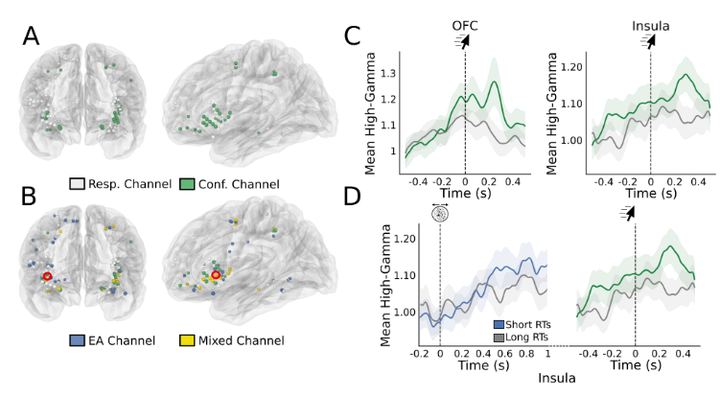A functional overlap between evidence accumulation, confidence, and changes of mind in the pre-supplementary motor area and insula

Abstract
Evidence accumulation models have proven to be powerful tools to explain the temporal dynamics of decisions, as well as their metacognitive components such as confidence judgments and changes of mind. However, it is still unclear how and where in the brain evidence accumulation leads to these two metacognitive components. To better understand the functional overlap between evidence accumulation, confidence, and changes of mind, we recorded intracranial high-gamma activity in patients with focal epilepsy while they reported the motion direction of a random dot kinetogram with a computer mouse, and estimated their confidence level. We found an anatomical overlap between the neural correlates of evidence accumulation, confidence, and changes of mind in the pre-supplementary motor area, as well as in the orbitofrontal, inferior frontal, and insular cortices. Both mouse-tracking behaviour and electrophysiological results were reproduced with a post-decisional evidence accumulation model. After characterising the temporal dynamics of decision-making with mouse-tracking and intracranial electrophysiology, we conclude that confidence and changes of mind result from evidence accumulation instantiated before the decision in the pre-supplementary motor area, and after the decision in the insula.